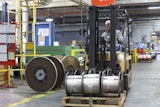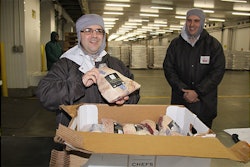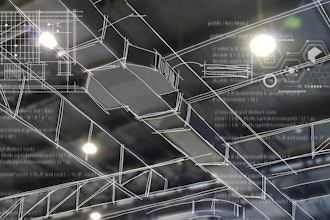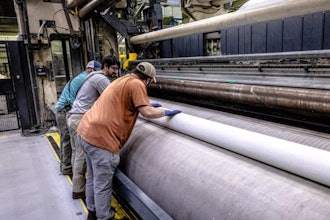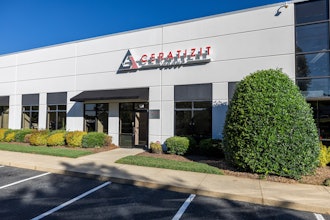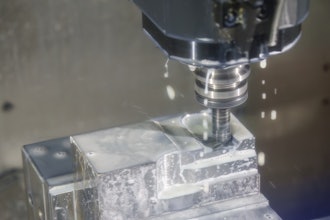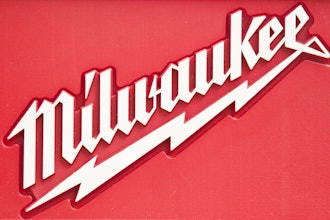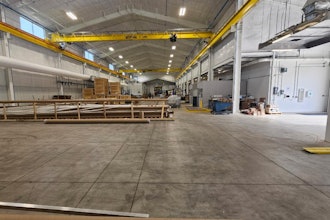Two years ago, IMPO published a story about APL Logistics’ effort to simultaneously implement 5S at all of its U.S. facilities. Featuring an interview with the company’s Charlie Jacobs, it included several key “lessons learned” as well as this memorable soundbite about a common 5S pitfall: “No matter how well-cleaned and organized your company’s newly 5S’d operations are, they will quickly revert to a state of disarray if the final S gets short-changed.”
We recently caught up with Jacobs to find out whether or not he and his company wound up heeding their own warning — and what they wish they’d known then that they know now.
IMPO: First of all, let’s get a quick update on your company’s 5S program. Is it still an active U.S. initiative?
Jacobs: It’s actually become a global one. We started rolling it out to most of our large operations across the world eighteen months ago, and today we’ve 5S’d 109 operations on several continents.
IMPO: During our last interview, you were quoted as saying: “In many ways, figuring out how to stay 5S’d is as important as all of the other four steps put together — and as difficult.” Now that you’ve got two more years of practicing 5S under your belt, do you agree or disagree with that statement?
Jacobs: I agree 100 perecnt. Much like it’s all too easy for yoyo dieters to regain the weight they’ve lost, it’s not uncommon for 5S’d facilities to lose much of the impressive form they’ve worked so hard to achieve unless they make a concerted effort to maintain it.
If facilities are truly 5S’d, you should be able to walk into them at any time and find them as impressively sorted, shined, set in order, etc. as they were on the day they passed their first audit — regardless of how long ago that audit happened. Otherwise what you’re really looking at are facilities that have only been 4S’d — and that eventually might not seem like they’ve been through the process at all. That’s a lot of effort to go through only to find yourselves back at square one.
IMPO: So what kinds of steps has your company taken to ensure it’s adequately emphasizing that fifth S?
Jacobs: In early 2016, we increased our emphasis on the Sustain step by launching a formal audit program. Each of our 5S’d facilities was told to expect an audit from our continuous improvement department or a high-ranking company executive twice per calendar year. In addition, all of them were tasked with conducting self-audits and submitting them to our department in between.
IMPO: What do these formal audits consist of?
Jacobs: They’re a detailed walk-through of each operation to assess how present 5S culture is and how well that operation’s areas continue to look and feel in terms of being uncluttered, well-ordered, cleaned and standardized.
Each audit starts with a 100-point score, and points are deducted for anything an auditor sees that is no longer up to 5S standards. And each one includes a detailed debriefing with facility management to discuss the final score and assemble a follow-up plan and timeline for correcting any deficiencies.
IMPO: And what do self-audits consist of?
Jacobs: They measure the same things except that they’re often done by the individuals who are responsible for keeping the various areas of their operation 5S’d. Each of these 5S area owners audits another owner’s area rather than the one they’re responsible for. And to ensure they’re completing these audits mindfully, we compare the scores they’ve been sending us to the scores our formal auditor gives them.
IMPO: What kinds of things merit a deduction during audits?
Jacobs: It runs the gamut. It might be something cosmetic like scuffs on walls that need to be touched up. Or it could be cluttered areas or supplies that are piling up. (That’s a big one because clutter almost always equals waste, and waste almost always equals inefficiency.) Any safety hazard we see also elicits an immediate and large deduction. And so do things like not having an updated 5S board or seeing a poorly maintained red tag area for unneeded items. Truth be told, anything that’s not up to par is fair game.
IMPO: Do your facilities know when they’re going to be audited?
Jacobs: Right now all of our formal audits are announced 30 days in advance, because we’re still getting our operations acclimated to the process. It’s a natural part of the 5S evolution. But sometime in the next year we’ll be moving to unannounced audits, which is when the rubber will really meet the road.
IMPO: Why?
Jacobs: The last thing we want is for one of the S’s in our program to stand for “Sudden,” (as in, “Let’s do a major clean because management is coming to see us.”)
We understand that, human nature being what it is, many facilities are probably putting a little extra 5S effort in just before an auditor or potential client arrives. But our ultimate goal is to have every one of our facilities in a 5S inspection-ready state every day, regardless of whether or not anyone’s around to see or grade it. The heart of 5S is that it’s not just an operational/organizational change; it’s a cultural one, and that state of readiness is a key way that you know that a 5S culture is truly in place.
As any company that has practiced 5S for a long time will tell you, achieving that kind of cultural shift – when it’s absolutely embedded into your corporate DNA – doesn’t happen overnight. However, given the way audit scores are already improving, we’re headed in the right direction.
IMPO: Are there any other things about your fifth S audit program that are evolving?
We’ve already begun to raise the bar on what we consider to be an acceptable 5S audit score, especially at our most well-established operations. And we’ve begun to put incentives in place for operations that do especially well on our audits, because any quality program worth its salt should be encouraging excellence, not just discouraging waste or atrophy.
IMPO: On a final note, your U.S. 5S push just celebrated its fifth anniversary. If you had it to do all over again, would you?
Jacobs: Absolutely. All evidence points to the fact that a 5S’d facility is a safer, more productive and more cost-effective operation, and that’s really just the tip of the iceberg in terms of the benefits. As a corollary, we’ve gotten a lot of positive feedback from clients who have liked what they’ve seen as they walked through the 5S’d operations that we run for them. Our only regret is not realizing what a game-changer 5S could be and not pursuing it in a big way sooner.
